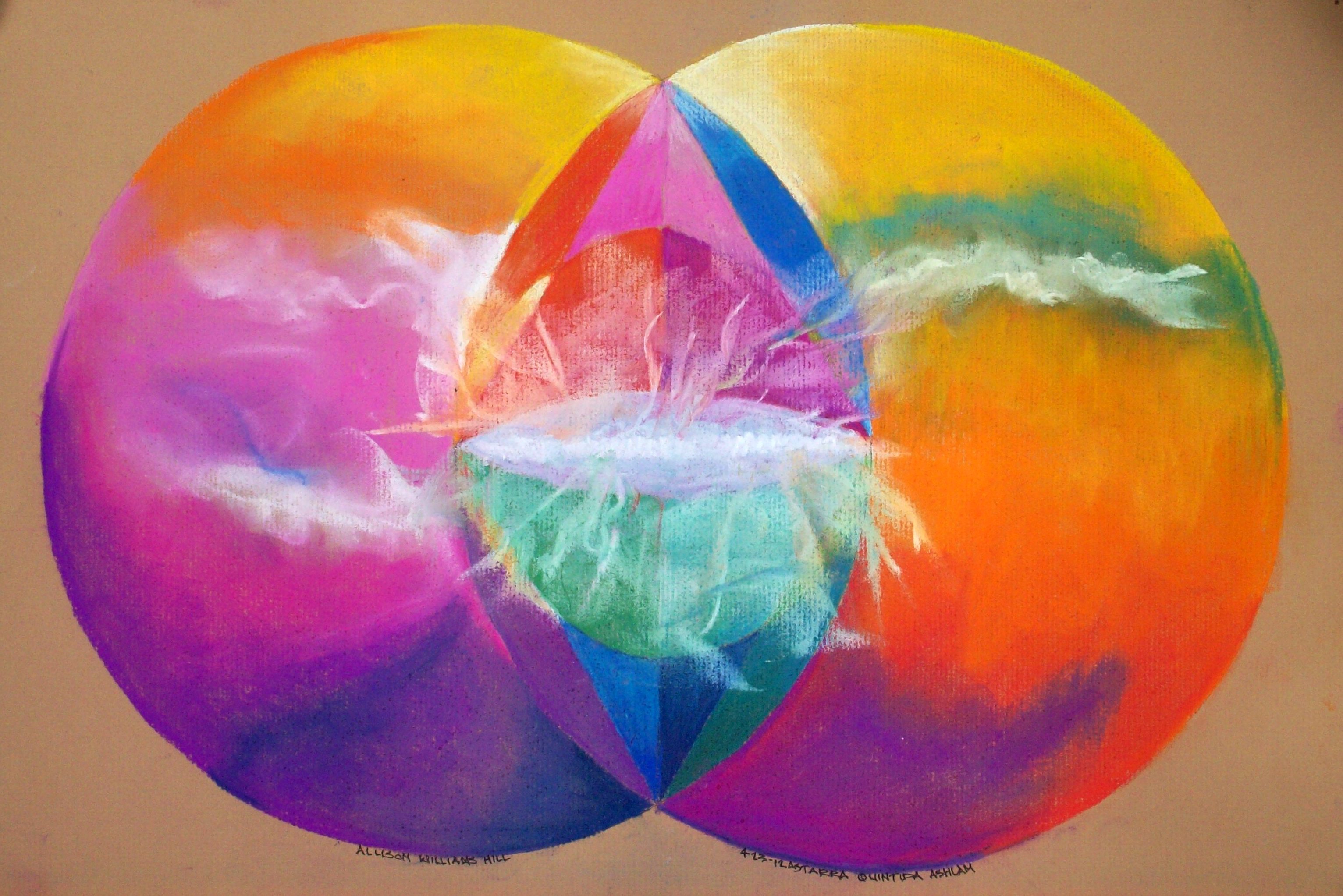The Art of Architecture
Part III

he art of architecture is cyclical like nature. The decomposition, the destruction of buildings and developments from environment or from cultural changes mark differing expressions and applications of development and style. Slavery, the institutionalization of free labor, affects civilizations by a decreasing servant population due to various reasons or from the enslaved's determination to not be enslaved any longer. This accepted integral component of many civilizations to maintain this aspect of their existence produced a unique architectural typology. It is intriguing how many scholars tend to ignore this issue when writing about the art, or the history, or of the spiritual interpetations of architecture.
"The Art of Architecture" from The Beautiful Necessity
by Claude Bragdon, FAIA
The fall of Rome marked the end of the ancient Pagan world. Above its ruin Christian civilization in the course of time arose. Gothic architecture is an expression of the Christian spirit; in it is manifest the reaction from licentiousness to asceticism. Man's spiritual nature, awakening in a body worn and weakened by debaucheries, longs ardently and tries vainly to escape. Of some such mood a Gothic cathedral is the expression: its vaulting, marvelously supported upon slender shafts by reason of a nicely adjusted equilibrium of forces; its restless, upward-reaching pinnacles and
spires; its ornament, intricate and enigmatic--all these suggest the over-strained organism of an ascetic; while its vast shadowy interior lit by marvelously traceried and jeweled windows, which hold the eyes in a hypnotic thrall, is like his soul: filled with world sadness, dead to the bright brief joys of sense, seeing only heavenly visions, knowing none but mystic raptures.
Thus it is that the history of architecture illustrates and enforces the theoso-phical teaching that everything of man's creating is made in his own image. Architecture mirrors the life of the individual and of the race, which is the life of the individual written large in time and space. The terrors of childhood; the keen interests and appetites of youth; the strong stern joy of conflict which comes with manhood; the lust, the greed, the cruelty of a materialized old age--all these serve but as a preparation for the life of the spirit, in which the
man becomes again as a little child, going over the whole round, but on a higher arc of the spiral.

tend to think that structures reflect man's image, however, it is what image of man that those in power want to project, who builds those structures, and where their place is in that society that theosophy tends to gloss over. Slavery was and still is considered valuable to those who work to gain wealth and retain as much of it as possible. As far as the image of man is concerned, it is assumed we all have the same body and the same use of that form. The Romans used people for labor, for sanitation, for everything they felt they should be separated from for purity and elevation from the unenlightened population. Theosophy perpetuates that mindset, however, more people have access to the information in this time.
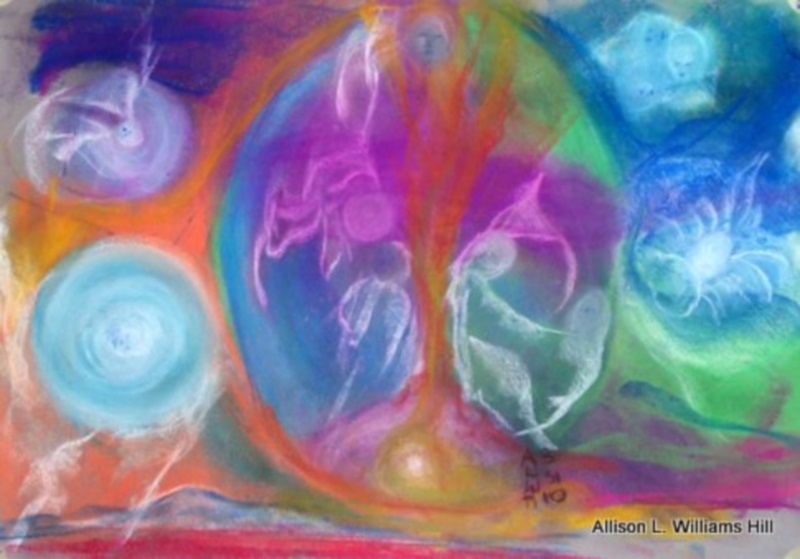
Partnership by Allison L. Williams Hill
The final, or fourth state being only in some sort a repetition of the first, it would be reasonable to look for a certain correspondence between Egyptian and Gothic architecture, and such a correspondence there is, though it is more easily divined than demonstrated. In both there is the same deeply religious spirit; both convey, in some obscure yet potent manner, a sense of the soul being near the surface of life. There is the same love of mystery and of symbolism; and in both may be observed the tendency to create strange composite figures to typify transcendental ideas, the sphinx seeming a blood-brother to the gargoyle. The conditions under which each architecture flourished were not dissimilar, for each was formulated and controlled by small well-organized bodies of sincerely religious and highly enlightened men--the priesthood in the one case, the masonic guilds in the other--working together toward the consummation of great undertakings amid a populace for the most part oblivious of the profound and subtle meanings of which their work was full. In Mediaeval Europe, as in ancient Egypt, fragments of the Ancient Wisdom--transmitted in the symbols and secrets of the cathedral builders--determined much of Gothic architecture.
The architecture of the Renaissance period, which succeeded the Gothic, corresponds again, in the spirit which animates it, to Greek architecture, which succeeded the Egyptian, for the Renaissance as the name implies was nothing other than an attempt to revive Classical antiquity. Scholars writing in what they conceived to be a Classical style, sculptors modeling Pagan deities, and architects building according to their understanding of Vitruvian methods succeeded in producing works like, yet different from the originals they followed--different because, animated by a spirit unknown to the an-cients, they embodied a new ideal.
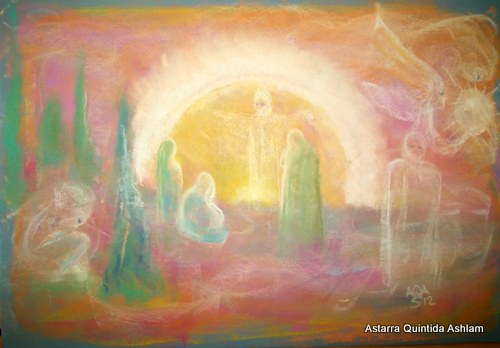
Mom's Mother Day Message by Allison L. Williams Hill
In all the productions of the early Renaissance, "that first transcendent springtide of the modern world," there is the evanescent grace and beauty of youth which was seen to have pervaded Greek art, but it is a grace and beauty of a different sort. The Greek artist sought to attain to a certain ab-stract perfection of type; to build a temple which should combine all the excel-lencies of every similar temple, to carve a figure, impersonal in the highest sense, which should embody every beauty. The artist of the Renaissance on the other hand delighted not so much in the type as in the variation from it.
Preoccupied with the unique mystery of the individual soul--a sense of which was Christianity's gift to Christendom--he endeavored to portray that wherein a particular person is unique and singular. Acutely conscious also of his own individuality, instead of effacing it he made his work the vehicle and expres-sion of that individuality. The history of Renaissance architecture, as Symonds has pointed out, is the history of a few eminent individuals, each one moulding and modifying the style in a manner peculiar to himself alone. In the hands of Brunelleschi it was stern and powerful; Bramante made it chaste, elegant and graceful; Palladio made it formal, cold, symmetrical; while with Sansovino and Sammichele it became sumptuous and bombastic.
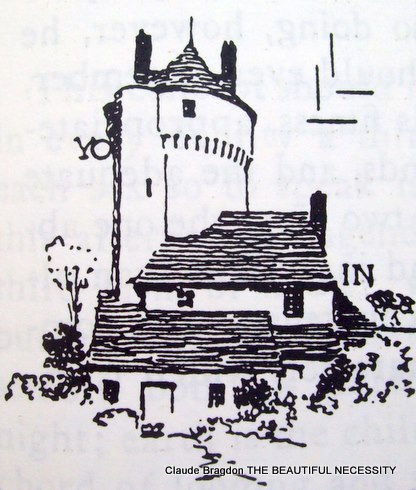
As the Renaissance ripened to decay its architecture assumed more and more the characteristics which distinguished that of Rome during the decadence. In both there is the same lack of simplicity and sincerity, the same profusion of debased and meaningless ornament, and there is an increasing disposition to conceal and falsify the construction by surface decoration.
The final part of this second or modern architectural cycle lies still in the future. It is not unreasonable to believe that the movement toward mysticism, of which modern theosophy is a phase and the spiritualization of science an episode, will flower out into an architecture which will be in some sort a reincarnation of and a return to the Gothic spirit, employing new materials, new methods, and developing new forms to show forth the spirit of the modern world, without violating ancient verities.
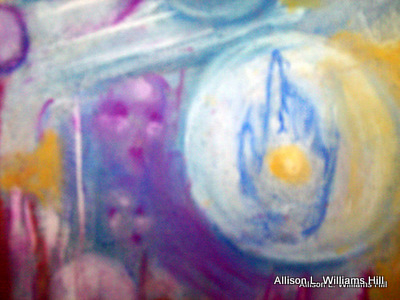
Thought detail by Allison Williams Hill
In studying these crucial periods in the history of European architecture it is possible to trace a gradual growth or unfolding as of a plant. It is a fact fairly well established that the Greeks derived their architecture and ornament from Egypt; the Romans in turn borrowed from the Greeks; while a Gothic cathe-dral is a lineal descendant from a Roman basilica.
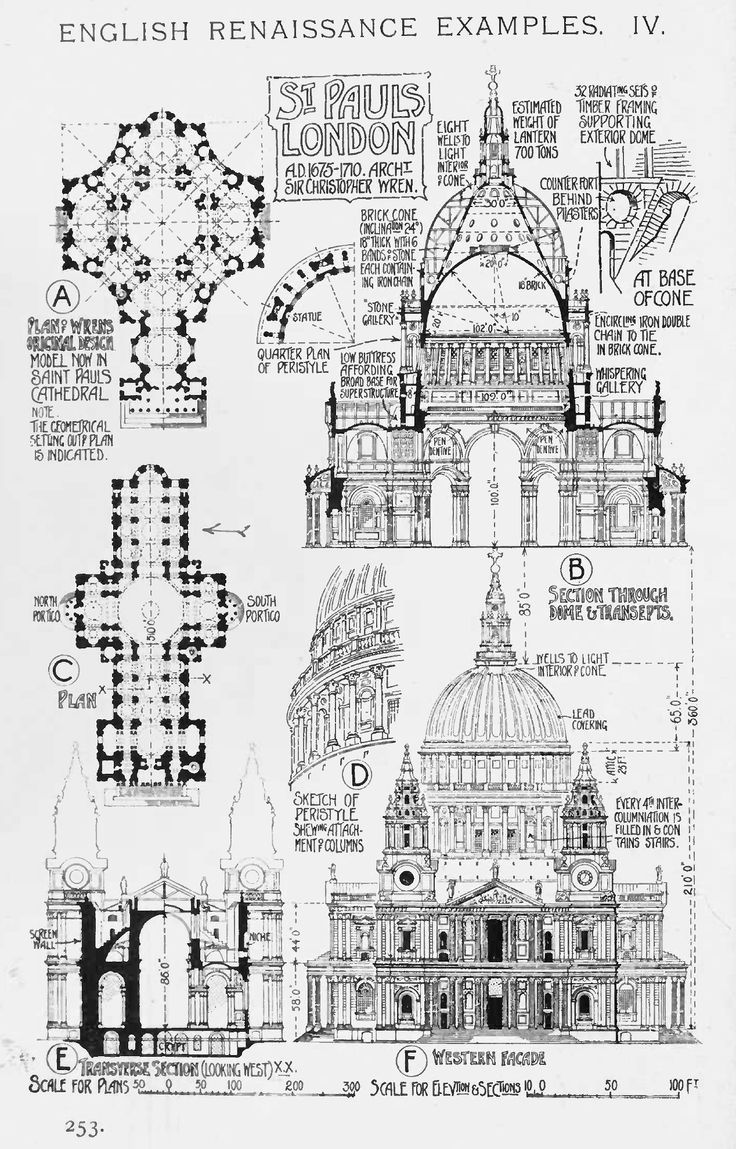
The Egyptians in their constructions did little more than to place enormous stones on end, and pile one huge block upon another. They used many columns placed close together: the spaces which they spanned were inconsi-derable. The upright or supporting member may be said to have been in Egy-ptian architecture the predominant one. A vertical line therefore may be taken as the simplest and most abstract symbol of Egyptian architecture (Illustration 2).
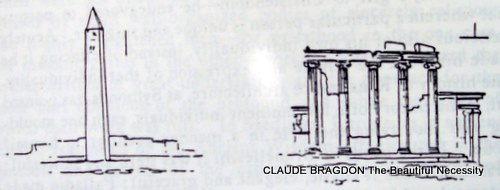
Illustrations 2 and 3
It remained for the Greeks fully to develop the lintel. In their
architecture the vertical member, or column, existed solely for the sake
of the horizontal
member, or lintel; it rarely stood alone as in the case of an Egyptian obelisk. The columns of the Greek temples were reduced to those proportions most consistent with strength and beauty, and the intercolumnations were relatively greater than in Egyptian examples. It may truly be said that Greek architecture exhibits the perfect equality and equipoise of vertical and horizontal elements and these only, no other factor entering in. Its graphic symbol would therefore be composed of a vertical and a horizontal line (Illustration 3). The Romans, while retaining the column and lintel of the Greeks, deprived them of their structural significance and subordinated them to the semicircular arch and the semi-cylindrical and hemispherical vault,the truly characteristic and determining forms of Roman architecture. Our symbol grows therefore by the addition of the arc of a circle (Illustration 4). In Gothic architecture column, lintel, arch and vault are all retained in changed form, but that which more than anything else differentiates Gothic architec-ture from any style which preceded it is the introduction of the princi-ple of an equilibrium of forces, of a state of balance rather than a state of rest, arrived at by the opposition of one thrust with another contrary to it. This fact can be indicated graphically by two opposing inclined lines, and these united to the preceding symbol yield an accurate abstract of the elements of Gothic architecture (Illustration 5).
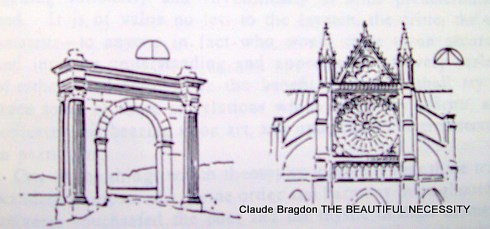
Illustrations 4 and 5
All this is but an unusual application of a familiar theosophic teaching, namely, that it is the method of nature on every plane and in every depart-ment not to omit anything that has gone before, but to store it up and carry it along and bring it into manifestation later. Nature everywhere proceeds like the jingle of _The House that Jack Built_: she repeats each time all she has learned, and adds another line for subsequent repetition.
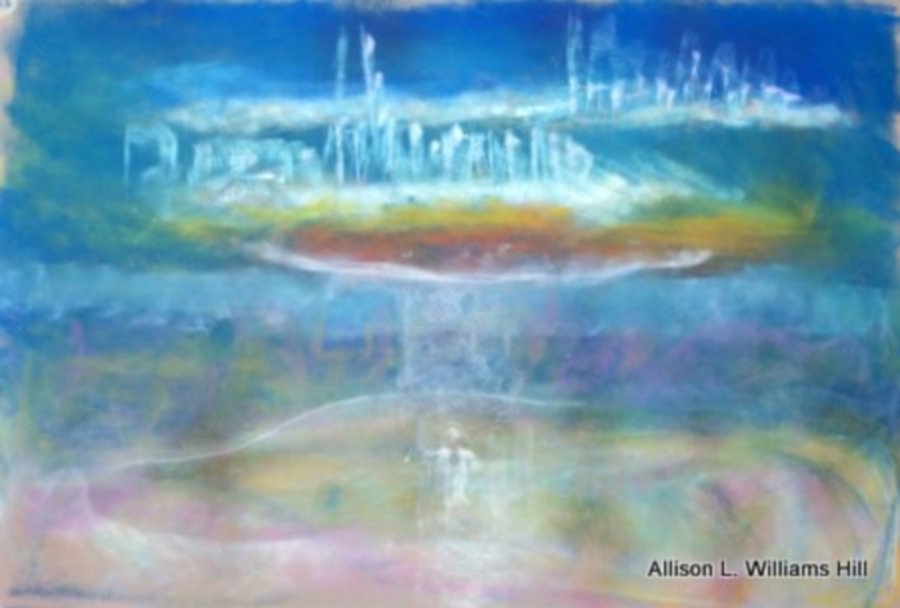
Rainbow Bridge by Allison L. Williams Hill
[Footnote A: The quaint Oriental imagery here employed should not blind the reader to the precise scientific accuracy of the idea of which this imagery is the vehicle. Schopenhauer says: "Polarity, or the sundering of a force into two quantitively different and opposed activities striving after re-union,... is a fundamental type of almost all the phenomena of nature, from the magnet and the crystal to man himself."]
Links
The above meditation mandala will be available soon.


